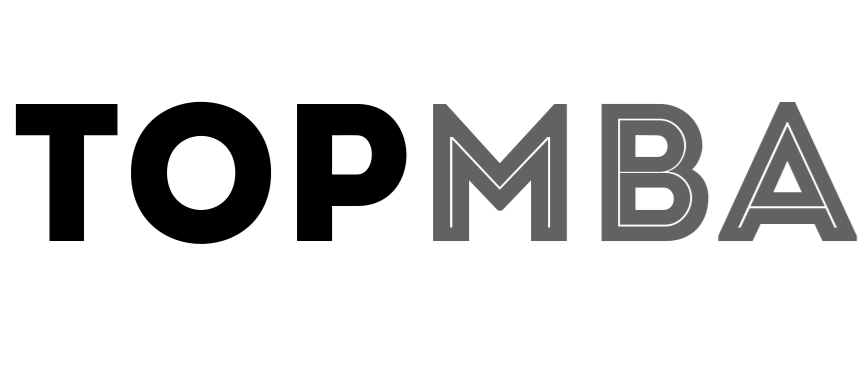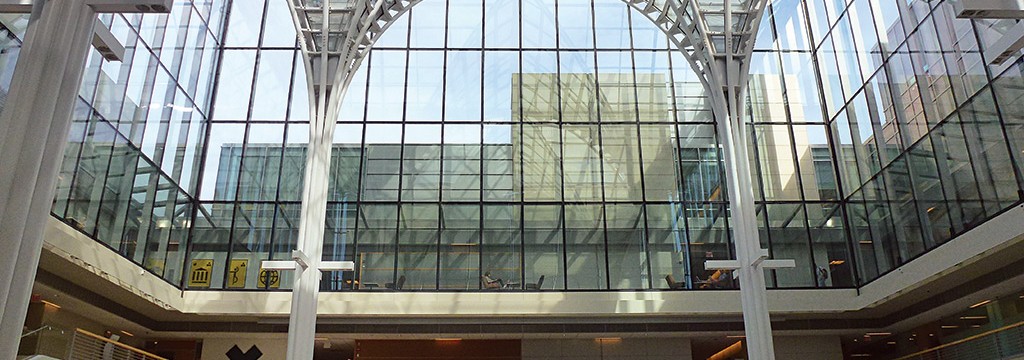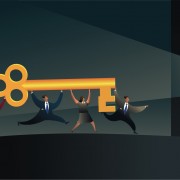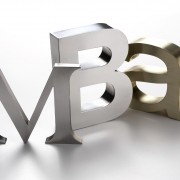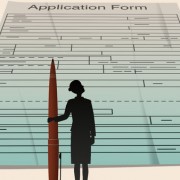The B-School Class of 2015: By The Numbers
Originally written by John A. Byrne*
A portrait of the incoming class of MBA students
This year’s incoming class at the Top 10 MBA programs in the U.S. is an extraordinary bunch, arguably one of the most talented and skilled classes of MBA students to ever enter business school.
For one thing, nine out of the ten reported an increase in MBA applications, allowing most of them to be even more selective than usual. The only school where that wasn’t so was the University of Pennsylvania’s Wharton School, where applications fell by 5.8% to 6,036 from 6,408 a year earlier.
For another, GMAT averages for the Class of 2015 also rose at nine of the ten schools, reaching record levels at several MBA programs. The historical GMAT leader, Stanford Graduate School of Business, is reporting a record 732 average GMAT this year, up from 729 last year. The only school to report a decline: UC-Berkeley’s Haas School of Business where the average fell by just one point to 714 this year from 715 last year.
WHARTON AND KELLOGG REPORT HIGHEST GMAT INCREASES IN TOP TEN
Wharton and Northwestern University’s Kellogg School of Business scored the largest single increases in GMAT averages: Despite its fall in applications, Wharton hit a record 725, higher than any school other than Stanford or Harvard. Kellogg, meantime, reported a record average of 715. At both Wharton and Kellogg, the mean GMAT bumped up seven full points in a single year from 718 at Wharton and 708 at Kellogg.
Undergraduate grade point averages–already high–remained pretty stable with some noteworthy exceptions. At Stanford, average GPA crept higher to an astounding 3.73, highest for any U.S. business school and up from 3.69 last year. At Chicago Booth, GPA eked up to 3.57 this year, from 3.52 a year earlier. Dartmouth College’s Tuck School of Business reported a tiny increase to 3.50 from 3.49. In general, though, undergraduate grade averages were exactly the same year-over-year: A 3.67 at Harvard, a 3.50 at Columbia, a 3.61 at UC-Berkeley Haas, and a 3.40 at Duke University’s Fuqua School.
Most admissions officials and deans say the applicant pool is among the best they have ever seen. “The quality of the pool is just stronger,” says Stacey R. Kole, deputy dean of the full-time MBA program at the University of Chicago’s Booth School of Business. “We saw a bump in our average GPA and that is just reflective of the stronger pool we’re seeing. We hit a 730 median GMAT this year, the 96th percentile. There are very few people under 680 these days. When I got here ten years ago, the average GMAT was 695. It’s a record this year at 723. And it’s not like we just shimmied under the bar on GMAT.” Indeed, Chicago Booth’s 730 median is now equal to Harvard Business School for the first time in the school’s history.
AT STANFORD & BERKELEY, 15% OF THE INCOMING MBA STUDENTS ALREADY HAVE ADVANCED DEGREES
No matter how you parse the class profile numbers on the Top Ten this years, it’s simply damn impressive. At Stanford and Berkeley, 15% of the incoming class already boasts advanced degrees. At the Tuck School, that is true of 16% of the Class of 2015. With only two exceptions–Harvard and Stanford–the incoming classes have at least five full years of work experience under their belts. At Stanford, the average is lowest: 4 years. At Duke, it’s highest: 5.5 years.
All told, Poets&Quants’ Top Ten schools received 51,196 applications, up 4.2% from the 49,125 they got a year earlier. The MBA programs that report higher than the overall percentage increase are Chicago (9.9%), Kellogg (8.3%), MIT Sloan (7.5%), Dartmouth College’s Tuck School of Business (7.0%), Columbia Business School (6.6%), and Stanford (5.8%). Columbia also reversed a 21% plunge in MBA applications in 2011-2012 by posting a 6.6% increase this past year..Those increases helped fuel two other trends this year: many schools enrolled larger classes of MBA students and many schools reported slightly lower acceptance rates.
Only 18.1% of Columbia Business School’s 5,765 applicants were admitted to the Class of 2015 versus the school’s 20.8% acceptance rate a year earlierAt Harvard, incoming students increased to 932, from 913 last year; at Stanford, the 406 students in the Class of 2015 is the largest class ever enrolled; at Chicago Booth, the incoming class numbers 581, up from 575 a year ago. As for selectivity, Stanford’s acceptance rate fell to 6.8% from 7.1% last year.
41% OF INCOMING MBA CLASSES AT STANFORD, MIT & DUKE ARE FROM OUTSIDE THE U.S.
When it came to women and international students, the portrait of the Class of 2015 is mixed. Four schools reported increased percentages for women and non-U.S. students, while four reported decreases. Harvard, Stanford, Kellogg, and Tuck enrolled more women this year than last, with Wharton boasting the highest percentage at 42% and Haas with the lowest at just 29%. Duke, Berkeley, MIT Sloan, and Wharton had slightly lower enrollments of women this year over last.
The Top Ten schools with the highest percentage of international students are Stanford, MIT, and Duke–all at 41% of this year’s incoming group. The lowest percentage is at Tuck with 32%. The percentage of international students went up this year at Chicago (by four full percentage points to 36%), MIT, Columbia (also by four full percentage points to 36%), and Duke. Percentages fell slightly at Stanford, Wharton, Kellogg, and Tuck.
The numbers also shed a bit more light on Wharton’s application decline. Wharton officials have suggested that the drop was largely due to a new discussion-based admissions test that scared off some applicants who speak English as a second language. Though some admission consultants have pooh-poohed that explanation, the Class of 2015 enrollment stats tend to verify the conclusion the new test put off applicants from outside the U.S. The percentage of international students in Wharton’s Class of 2015, for example, fell to 35% from 38%, but at schools strong in finance that are thought to be direct rivals to Wharton, such as Chicago and Columbia, the percentages of international students in the Class of 2015 rose significantly. At both Chicago and Columbia, international students now make up 36% of the newly entered class, up four percentage points from 32% just a year ago.
CHICAGO BOOTH MAKING SIGNIFICANT YEAR-OVER-YEAR GAINS
The numbers show that the most significant year-over-year progress is being reported by Chicago Booth. Not only was Booth’s application increase higher than any other top ten business school, this year’s record GMAT and GPA averages put the school just behind Harvard and Stanford. Booth’s 730 GMAT median, in fact, is equal to Harvard Business School’s median for the first time in the school’s history. If not for Wharton’s unusual seven-point jump in average GMAT, a jump that admission consultants claim was a more conscious decision by the school to detract attention from yet another decline in applications, Chicago Booth’s numbers would have exceeded Wharton’s average for the first time.
The uptick in applications at Booth, combined with Wharton’s drop, allowed Booth to trim its acceptance rate to 21%, just a tick better than Wharton’s 22% rate for the Class of 2015. The school’s yield–the percentage of admitted applicants who enroll in the MBA program–is now on par with Wharton as well: 62.5% at Chicago vs. an estimated 65% at Wharton. But the incoming stats for the Class of 2015 fail to capture equally compelling data on graduates.
“We are starting to see changes in the aspirations of our students on the way out,” says Kole. “They just don’t mirror MBA job trends, rather thay are reflecting that Chicago is making a more compelling case for entrepreneurship. It’s not just (Admissions Director) Kurt or me saying we’re good at something. There is something tangible that people can grab onto. We are seeing more people interested in energy and education. That didn’t exist ten years ago. Longer term, we are seeing a broadening of aspirations.”
When Forbes magazine surveyed the Class of 2008 to crank out its most recent return-on-investment ranking of MBA programs, Chicago Booth was second, behind only Stanford University’s Graduate School of Business. It was a surprising showing, particularly given Booth’s long-time reputation in finance which was the most damaged sector in the Great Recession that generally punished Class of 2008 grads. Yet, Chicago Booth alumni reported five-year gains in average salary of $92,600, well above Harvard’s $79,600 or Wharton’s $74,400. “The fact that members of the Class of 2008 are sitting just behind Stanford in ROI tells me there is an enduring value to the Booth degree because so many went into finance,” says Kole. “That is very positive. And the thoughtful applicant is seeing that because 54% of that class went into finance roles in 2008.”
And what about the makeup of the Class of 2015? At every Top ten school, the largest chunk of incoming students continue to come from financial services. Columbia Business School leads here with 40% of its first-year MBAs with financial backgrounds, including real estate. Wharton follows closely with 39% and then there’s a sizable drop off until you come to Harvard Business School with 31%. The biggest surprise in the numbers? Only 26% of the incoming MBA students at Chicago Booth, for many years known more as a finance school, have worked in finance. That is the tied for the lowest of any Top ten school with Kellogg.
Some schools provide more detailed breakdowns on their incoming students. Harvard, for example, leads in nabbing the most MBAs with private equity and venture capital experience (18%). That compares with 17% at Stanford, and 12% at Wharton. Columbia Business School reports that 7% of its incoming MBA students boast PE work experience.
Columbia, meantime, has the largest contingent of consultants in its new MBA class: 29%. That’s above Tuck (25%), Kellogg (24%), and Haas 22%). Harvard has the lowest percentage–just 19%, surprisingly low given the demand for MBAs from the big global consulting giants.
Originally published at:
